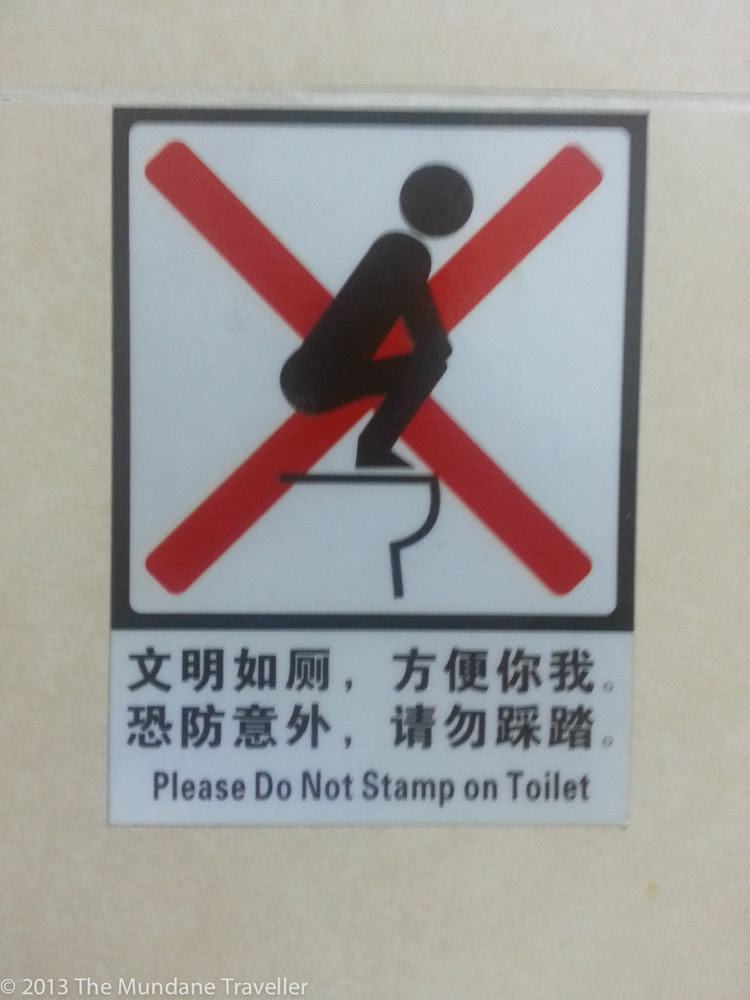Toilet revolution!, part 2
Language Log 2018-11-23
Why China still needs one, and Chairman Xi keeps calling for a profound transformation of toilet etiquette:
The sign says:
běn cèsuǒ yǐjīng jiāqiáng qīngjié qǐng ānxīn shǐyòng mǎtǒng zuòdiàn
本厕所已经加强清洁 请安心使用马桶坐垫
This restroom has undergone enhanced cleansing; Please feel at ease to use the toilet seat.
In other words, don't do your business on the floor / ground, which is a widespread phenomenon in China.
Another problem is that it is very common for people in China to stand on the toilet when they do their business. That's probably because:
1. many people are used to squat toilets, so when faced with a Western style throne, they feel more comfortable climbing up on it and assuming their usual posture
2. they can't bear the thought of sitting on a filthy toilet seat
So you will often see signs of this type in Chinese restrooms:
wénmíng rú cè fāngbiàn nǐ wǒ kǒng fáng yìwài qǐng wù cǎità
文明如厕 方便你我 恐防意外 请勿踩踏
Being civilized* in the restroom, Is convenient** for you and me; To prevent an accident, Please don't step on [the toilet].
—
*Appeals for civilized use of restroom facilities are typical on signage.
**Long-term readers of Language Log know well that, when it comes to toilet etiquette, fāngbiàn 方便 ("convenience") is a loaded word, so to speak (see especially the 3rd [for its Sanskrit antecedents] and 9th posts listed below).
Readings
- "Toilet Revolution!!" (11/26/17) — see particularly the last comment for numerous articles on this subject in the Chinese press
- "Civilized urinating" (10/31/17)
- "Linguistic advice in the lavatory: speaking Mandarin is a great convenience for everyone" (9/11/07)
- "Just the Queen invites irrigation" (4/8/08)
- "Chinese lesson for today" (8/29/10)
- "Next day's Chinese lesson" (8/31/10)
- "Urination is inhuman" (2/6/11)
- "Signs from Kashgar to Delhi" (10/11/13)
- "Greater and lesser conveniences" (6/25/14)
- "Please pee in the pool" (8/4/14)
- "'Please enter your cock after urinating'" (4/9/16)
- "Bovine / friggin' toilet" (9/6/18)
- Arthur Meursault, Party Members (Camphor Press, 2016), ch. 4 (can be read through Amazon's "Look Inside" feature here) — be prepared for a scatological horror story
[Thanks to Mark Swofford, Zeyao Wu, and Qing Liao]

